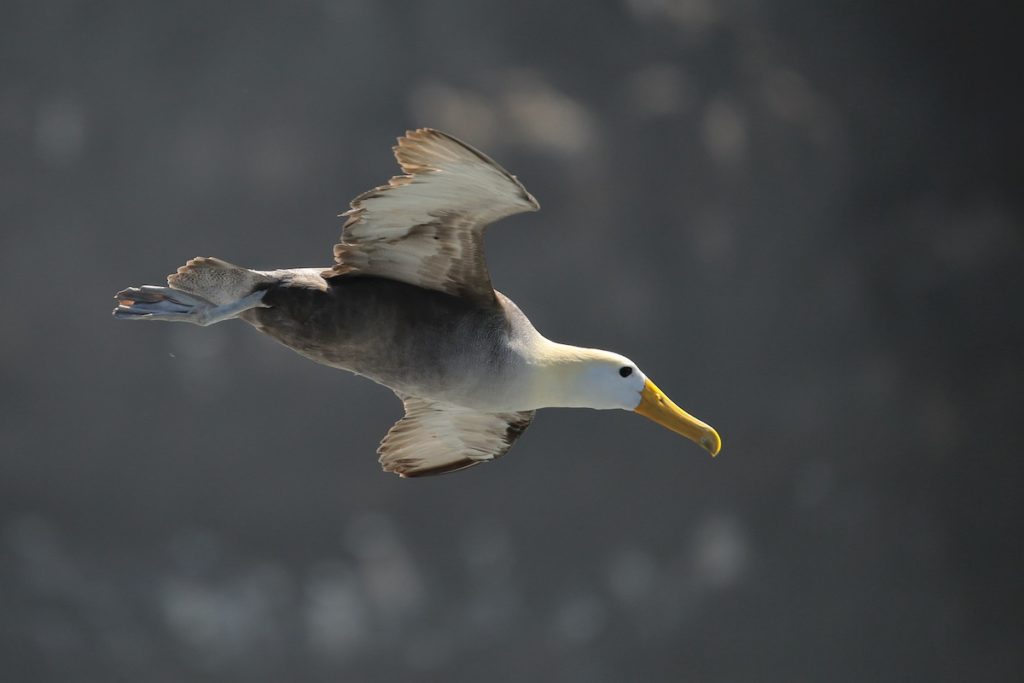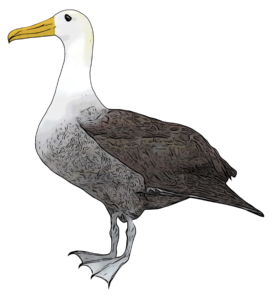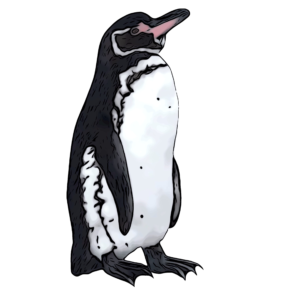
Identification
Unmistakable. The only albatross to regularly occur within Galapagos waters.
Description
A huge bird with a wingspan of up to 2.5m. Adult has orange-yellow bill, white head and neck tinged ochre, dark eyes, blue-grey legs and feet, dark brown backs and finely barred dark brown-grey and white underparts which may appear grey fom a distance or on the lower belly. In flight, underwings are pale grey in the center and black around the edges. Juveniles resemble adults, but have faded yellow bills, whiter heads and, depending on their age, tufts of brown down.
Galapagos Distribution
Although, in the Galapagos, this species breeds exclusively on Espanola, it can be seen foraging throughout the Galapagos Marine Reserve. The best place to view this large ocean wanderer is Punta Suarez. Apart from Espanola, Genovesa is the only island in the archipelago where this species has been observed on land.
Global Distribution
Outside of the Galapagos, this Albatross only breeds in small numbers on Isla de la Plaza, off the coast of mainland Ecuador. During the non-breeding season, birds disperse over the open ocean along the South American west coast between central Ecuadorian and south Peruvian waters.
Status in the Galapagos
A breeding vistor and near-endemic present in the Galapagos from April to December with copulation uccuring between mid-April and mid-June and laying a week to a month later. After this, incubation takes roughly two months with most chicks finally fledging by mid-December.
Conservation
The Waved Albatross is ranked as critically endangered due to its extremely limited breeding range (esentially less than 50 square kilometer on Espanola Island), and a rapid population decline in resent years as aresult of bycatch in its foraging grounds of the coasts of Peru and Ecuador. Here, more males than females tend to die due to human fishing practices, a trend which leads to a lower efective breeding population as two albatross parents are requitred to raise a single chick. The breeding population is also extremely vulnerable to El Nino cycles which lowers food availibility. This increases both adult and young mortality rate as individuals have to forage further and longer in search of food for themselves and their young before relieving their partners at the nest. In recent years harvesting of Waved Albatrosses by local fisherman on the South American west coast for food and feathers has also emerged as a major threat. Due to young albatrosses only reaching sexual maturaty at roughly 5 years, it may take a few years for the breeding population to recover after a prolonged decline.


